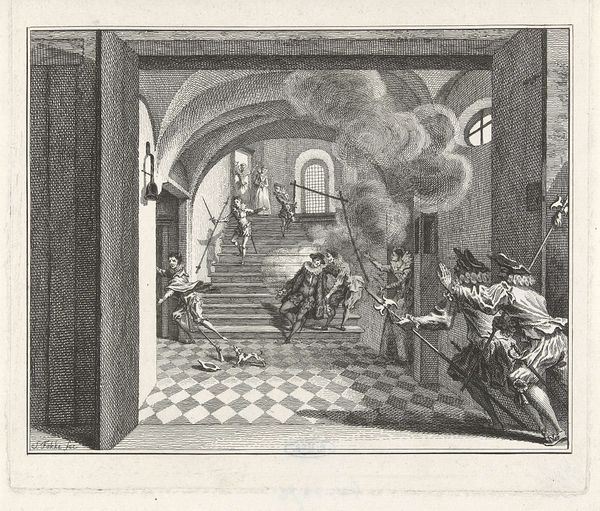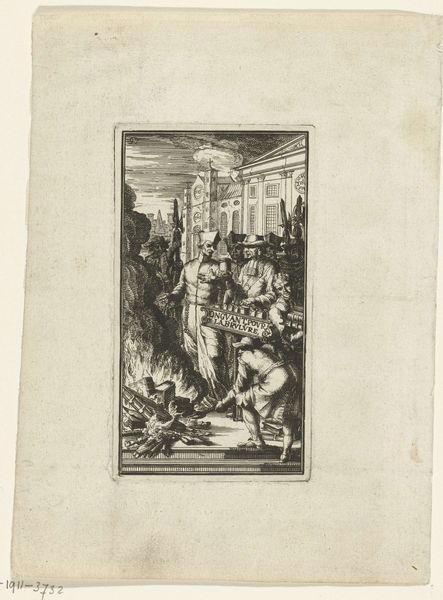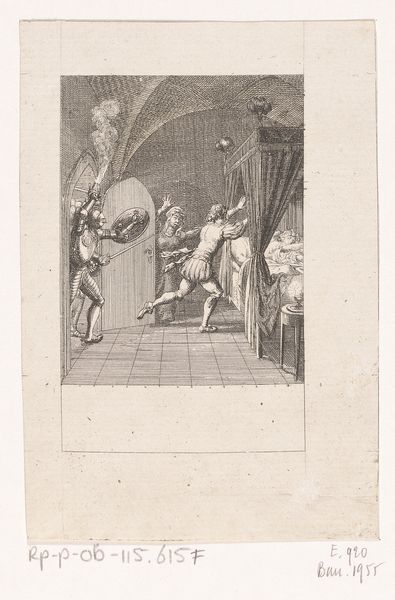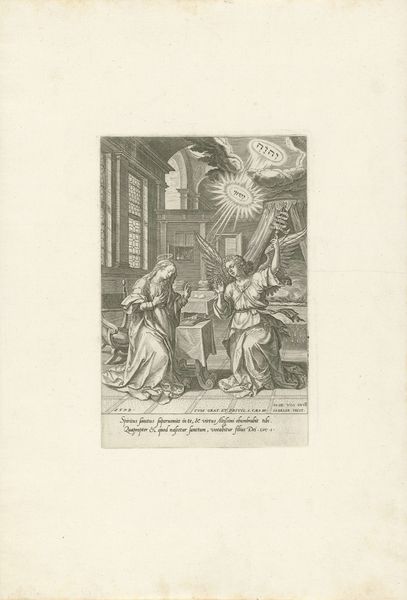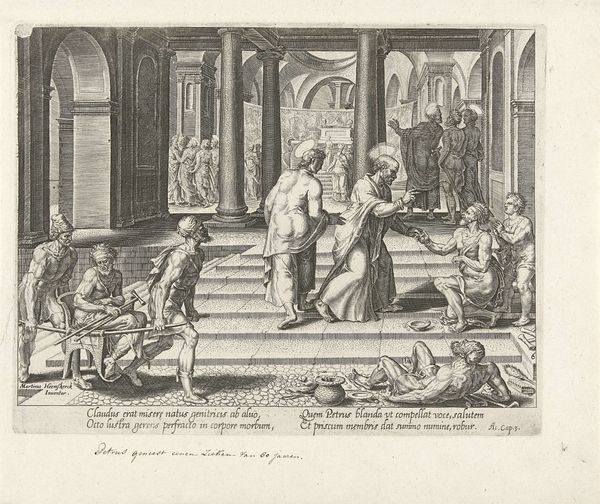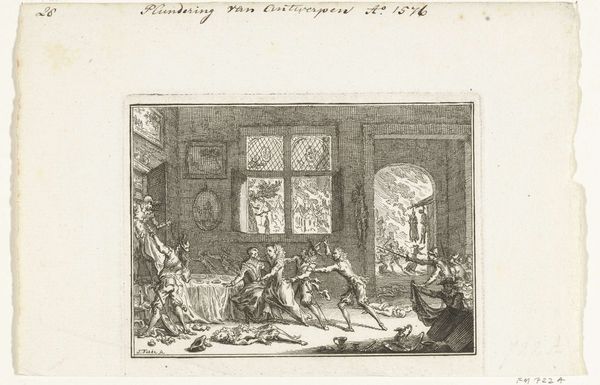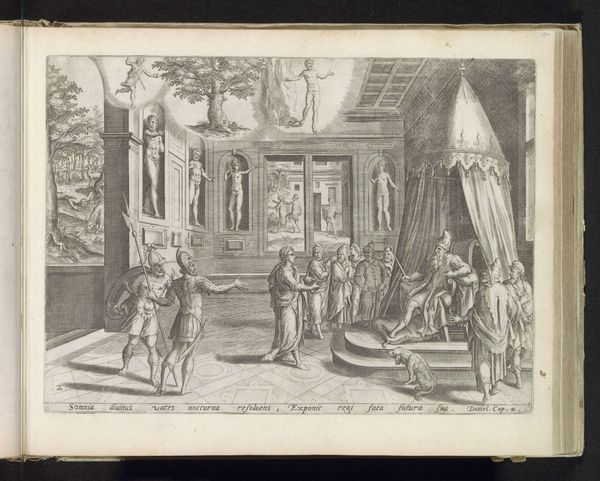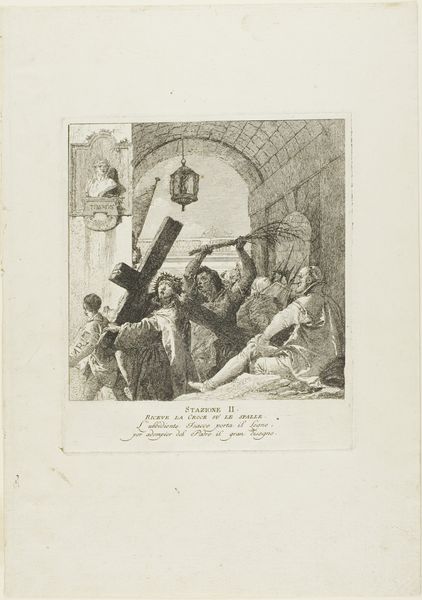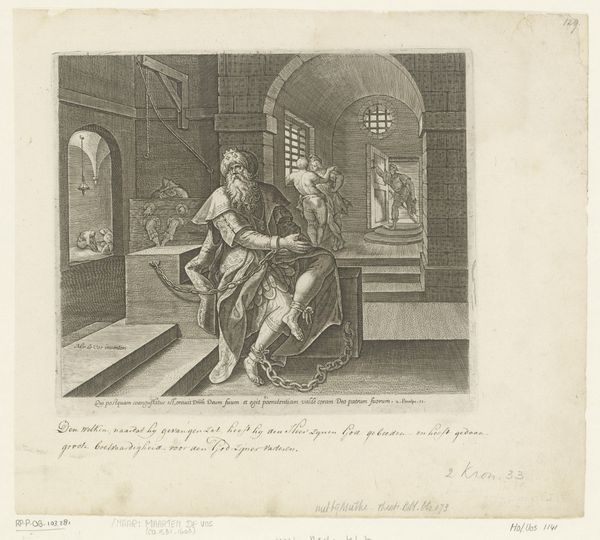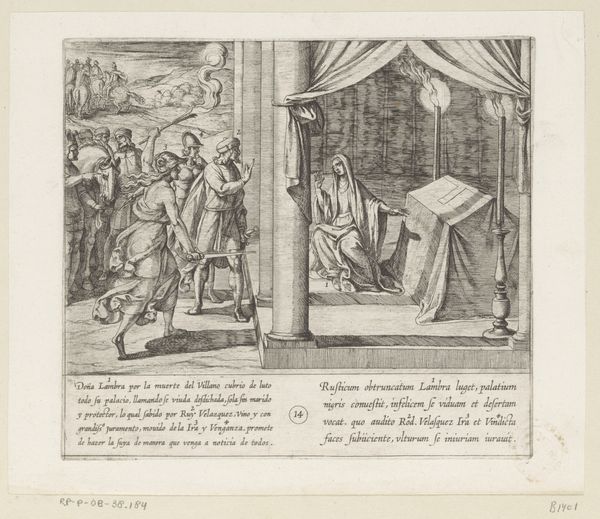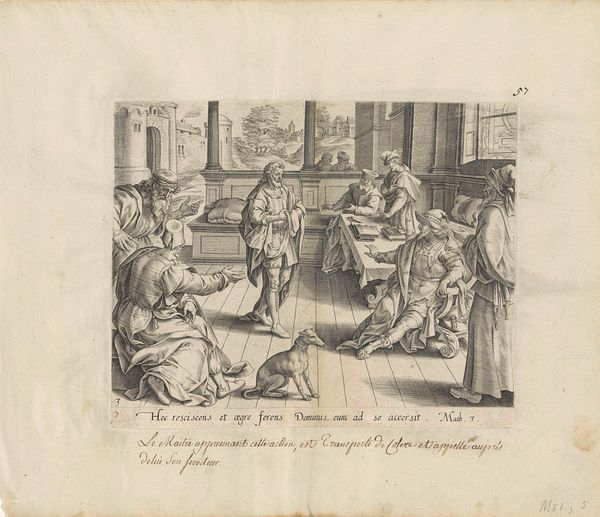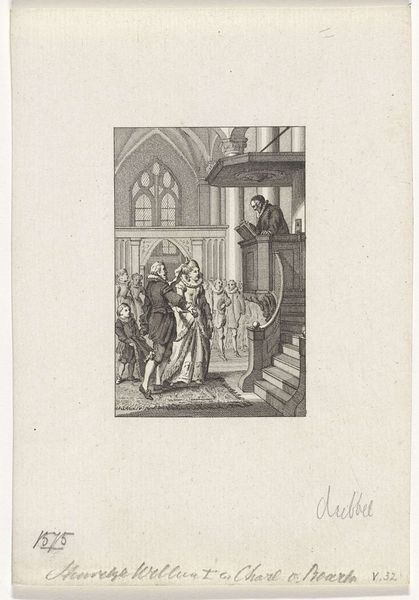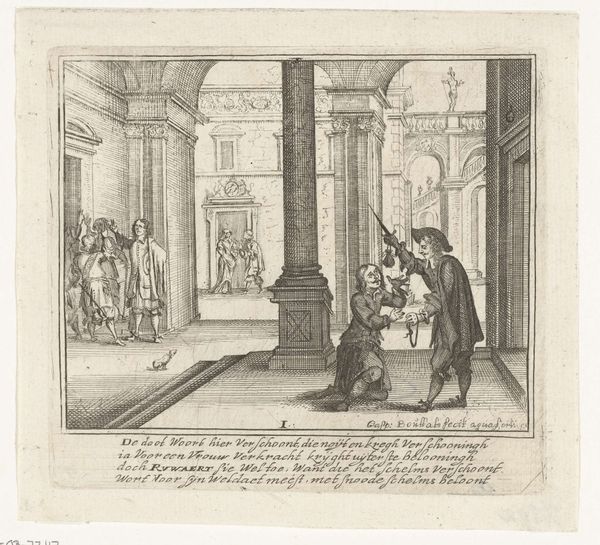
Dimensions: height 91 mm, width 106 mm
Copyright: Rijks Museum: Open Domain
Editor: Here we have Simon Fokke’s engraving, “The Murder of William of Orange, 1584,” made between 1782 and 1784. The stark monochrome really amplifies the drama of the moment, doesn’t it? I can almost hear the gunshots. What historical weight do you think this image carries? Curator: It’s not just a historical record; it's a piece deeply embedded in the political narratives of the Dutch Republic. Fokke created this image centuries after the event, during a period of nation-building and heightened political consciousness. Think about the choice to depict the assassination in such stark terms. How might that image function in the context of rising nationalism? Editor: That’s interesting. I hadn't considered the timing so closely. So, it’s less about accurately representing the past and more about shaping the present? Curator: Precisely! And more than that, the emphasis on violence raises some crucial questions. Who benefits from visually sensationalising such an act? How might the engraving promote certain ideas about resistance and martyrdom? This image, viewed critically, can provide insight into the power dynamics of the era and ongoing identity constructions of the nation. It’s an interpretation, not simply a document. Editor: That makes so much sense. So, by understanding the sociopolitical conditions when Fokke created the work, we see this isn’t just a depiction of a historical event; it’s a politically charged statement. Curator: Exactly! It allows us to unpack the complex relationship between art, memory, and the construction of national identity, as it connects the Dutch struggle for independence to debates around governance, representation and justice across time.
Comments
No comments
Be the first to comment and join the conversation on the ultimate creative platform.
